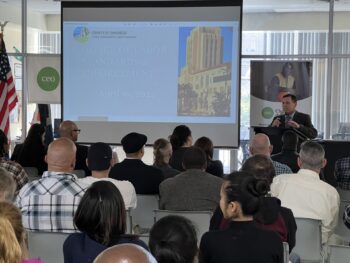Fewer at-risk teens in San Diego County are ending up in the juvenile justice system compared to the state average, according to a study conducted by the San Diego Association of Governments (SANDAG).
SANDAG analyzed 2011 statistics to compare the rates that law enforcement agencies throughout California referred juvenile offenders to probation, which is responsible for detaining and supervising young offenders. The study showed local agencies referred about 50 percent of juvenile offenders to probation, well below the state rate of 79 percent.
San Diego law enforcement agencies are able to keep more youth out of the juvenile justice system by instead referring low-risk offenders to diversion programs.
The goal is to offer positive and more cost-efficient programs to prevent further risky behavior such as gang involvement, looting, curfew violations, school truancy, and tagging or graffiti. Referrals to diversion programs can also come from schools, the court, the Probation Department, Child Protective Services, domestic violence and even parents.
The County’s Health and Human Services Agency (HHSA) has worked with Probation for almost a decade to fund some of these diversion programs, partnering with local agencies to provide services for youth between 12 and 17 years of age who might otherwise end up in the juvenile justice system. Participation is voluntary – the kids or their parents must choose to take part in the program.
Eight local law enforcement agencies with the highest number of referrals came in contact with more than 13,000 juveniles and sent about half of them to diversion programs instead of arresting them, according to the SANDAG analysis, which looked at the most populous jurisdictions.
“It’s all about prevention. We want kids to avoid risky behavior, avert them from getting into the juvenile system,” said HHSA Director Nick Macchione.
The County contracts with five local agencies—North County Lifeline, Social Advocates for Youth, South Bay Community Services, San Diego Youth Services, and Boys and Girls Club of San Diego—to run its Juvenile Diversion Program.
- The services offered include: Skill Building
- Community Service
- Academic Assistance
- Counseling
- Case Management
“The agencies we partner with in the community offer a good range of services for youth who are eligible to be diverted, and they have worked well,” said County Probation Officer Mack Jenkins, adding that these programs have likely contributed to a 22 percent decline in youth being placed on formal probation supervision locally in the last four years. “The analysis affirms what we have been reporting. Kids who are determined to be low or even medium risk are being diverted, while those who are high-risk are entering the juvenile justice system and being managed by Probation.”




